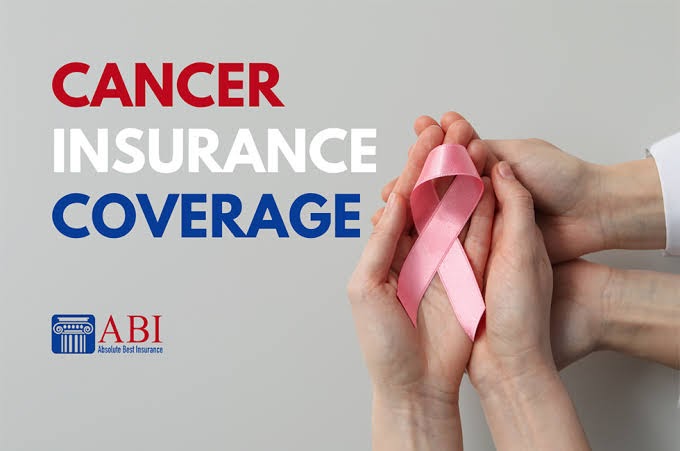“`html
Picture this: you’re facing the emotional turbulence of a cancer diagnosis, balancing doctor visits, treatment strategies, and the looming uncertainty. The last thing you need is the stress of financial burdens—mounting bills, unforeseen expenses, or anxiety about draining your savings. Enter critical illness insurance, a transformative option for those battling cancer. This isn’t just another insurance plan; it’s a financial cushion meant to provide reassurance so you can concentrate on what truly matters—your health and recovery. Let’s explore how critical illness insurance functions for cancer patients, its lump-sum benefits, covered illnesses, advantages, and tips on selecting the right policy for you.
Cancer is frequently included among the conditions covered by critical illness insurance, but not all types of cancer are included. Most policies cover invasive cancers (those that expand into nearby tissues), while early-stage or non-invasive cancers, such as specific skin cancers or carcinoma in situ, might have limited or partial coverage. Comprehending these specifics is vital to ensuring that your policy fits your requirements.
The Benefit of Lump-Sum Payments: Freedom to Focus on Recovery
A key feature of critical illness insurance is its lump-sum payout, usually between $10,000 and $100,000, according to the policy terms. Certain companies, like US Alliance Life and Security Company, provide benefits of up to $50,000, with flexible options to cater to your needs. This single payment is yours to allocate however you wish—no need for receipts or explanations. For cancer sufferers, this could mean:
– Paying out-of-pocket medical expenses: Chemotherapy, radiation, or experimental treatments often entail substantial costs that health insurance may not entirely cover.
– Compensating for lost income: If treatment prevents you from working, the payout can help cover mortgage, rent, or daily expenses.
– Funding lifestyle changes: Need to travel for specialized care or adapt your home for ease of access? The lump-sum can help accomplish that.
– Alleviating stress: Having a financial buffer allows you to concentrate on healing rather than financial concerns.
For instance, think of a breast cancer patient utilizing their $30,000 payout to handle chemotherapy co-pays, travel expenses to a leading cancer facility, and childcare during recovery. This flexibility empowers you to make choices that prioritize your wellness and family.
What Cancer Diagnoses Are Covered?
Although cancer is central to critical illness insurance, policies differ in what they include. Most plans encompass:
– Invasive cancers: These are cancers that have spread beyond their original location, necessitating aggressive treatments like chemotherapy or surgery.
– Specific cancer types: Some policies explicitly mention types of cancer such as breast, lung, or prostate cancer, but definitions are crucial. For example, a policy might stipulate that a diagnosis requires confirmation from an oncologist with specific medical documentation, such as pathology reports.
– Partial benefits for early-stage cancers: Certain insurers, like USAA, may provide reduced payouts for non-invasive cancers or carcinoma in situ, although these are generally lower compared to full payouts.
In addition to cancer, critical illness policies often encompass other severe conditions like heart attacks, strokes, major organ transplants, kidney failure, paralysis, and even Alzheimer’s disease. Comprehensive plans, such as those from US Alliance, can cover as many as 16 conditions, including benign brain tumors, severe burns, and the loss of hearing or eyesight. Always review the policy details to verify which cancers and conditions are included, as exclusions (like pre-existing conditions or particular skin cancers) may apply.
Advantages of Critical Illness Insurance for Cancer Patients
For those diagnosed with cancer, critical illness insurance is not merely about finances—it’s about security, freedom, and peace of mind. Here’s why it’s essential:
1. Financial Versatility: The lump-sum payout enables you to address urgent needs, whether it’s medical expenses, housing costs, or experimental treatments not included in your health plan. This is particularly vital in regions where medical expenses can be exorbitant. For instance, the American Cancer Society points out that the out-of-pocket costs for cancer patients often surge within months of a diagnosis.
2. Assistance for Non-Medical Costs: Cancer treatment typically includes travel, accommodation, or childcare. A policyholder may use their payout for flights to a specialized cancer facility or to hire domestic assistance.
3. Safeguarding Against Income Loss: If you’re the main provider or unable to work during treatment, the payout can help manage daily expenses, thus shielding you from financial difficulties. In the US, medical expenses are a leading cause of bankruptcy, making this coverage invaluable.
4. Reducing Anxiety: Knowing that you have a financial safety net alleviates stress, allowing you to focus on recovery without the burden of financial worries.
5. Tailored Coverage: Many insurers offer plans specifically for cancer or comprehensive options covering multiple serious illnesses, so you can customize your policy to suit your needs.
A Step-by-Step Guide to Selecting the Right Critical Illness Insurance Policy
Choosing the ideal critical illness insurance policy may seem daunting, but it doesn’t need to be. Here’s how to select the most suitable policy for your needs, particularly in areas where options and regulations differ:
1. Evaluate Your Risks and Requirements:
– Family History: If cancer is prevalent in your family, consider a cancer-specific policy or a comprehensive plan offering robust cancer coverage.
– Current Health Insurance: Assess your existing health coverage. High-deductible plans may necessitate additional support through critical illness insurance.
“`Certainly! Here’s a simplified and more reader-friendly version of the provided content, retaining the HTML structure:
“`html
– Financial Situation: Think about your savings and income. A policy that offers $20,000–$50,000 can help cover significant expenses while keeping premiums manageable.
2. Compare Covered Conditions:
– Search for policies that clearly cover invasive cancers and provide partial benefits for early-stage cancers. Be on the lookout for exclusions related to non-invasive cancers or pre-existing conditions.
– Some countries have insurers like Unum, Assurity, and UnitedHealthcare that offer solid plans with clear definitions. Ensure the policy includes coverage for cancers that are significant to you, such as breast, lung, or prostate cancer.
3. Evaluate Payout Structure:
– Choose a lump-sum policy for maximum flexibility. While some plans, like scheduled benefits, pay set amounts for treatments (like chemotherapy), lump-sum plans allow for better control of funds.
– Typical payout ranges are between $10,000 to $100,000, but you may find higher limits at a greater premium cost.
4. Understand Premiums and Costs:
– Premiums vary by age, health, and coverage amount. For instance, a healthy 41-year-old could pay around $65/month for a $75,000 benefit, while a $20,000 policy might only cost about $15/month.
– In some regions, guaranteed issue plans are available (without a medical exam), but they may come with higher premiums or restrictions on pre-existing conditions.
5. Check the Claims Process:
– Look for providers that have a simple claims process. You’ll need medical documentation, such as pathology reports and a specialist’s diagnosis, and there may be a 30-day survival period before payouts begin.
– Companies like Aflac offer quicker claims through direct deposits, which can be crucial during treatment periods.
6. Research Insurer Reputation:
– Pick insurers known for good customer service. In the US, firms like USAA, Unum, and Assurity have a strong reputation for reliable coverage. In the UK, consider Aviva or Legal & General. Check reviews and ratings on platforms like AM Best or Trustpilot.
7. Consider Add-Ons and Riders:
– Some policies may let you include coverage for your spouse or children or bundle critical illness insurance with life insurance for more comprehensive protection.
8. Consult a Licensed Advisor:
– Team up with an insurance agent or broker to compare plans effectively. In Tier 1 countries, agents might use tools like HealthMarkets or USAA’s partnerships to find tailored options for you.
Why Act Now?
Cancer doesn’t wait, and you shouldn’t either. Critical illness insurance is generally more affordable when you’re in good health, and delaying until a diagnosis could restrict your choices due to pre-existing condition clauses. In developed nations, where healthcare costs can be very high, having a policy can mean the difference between maintaining financial stability and falling into debt. For instance, the American Heart Association states that heart attack hospitalizations can exceed $53,000, with cancer costs often being even greater. A critical illness policy helps prepare you for unexpected challenges.
Final Thoughts: Empower Your Future with the Right Policy
Receiving a cancer diagnosis can change your life dramatically, but critical illness insurance can alleviate financial stress, allowing you to concentrate on your recovery. With a lump-sum payout, coverage for invasive cancers, and the flexibility to utilize funds as needed, this insurance acts as a significant support system for cancer patients. By thoroughly comparing policies, addressing your needs, and selecting a reputable insurer, you can find a plan that suits your lifestyle and budget.
Ready to learn more about your options? Reach out to a licensed insurance agent or visit trusted online platforms to help you find the ideal critical illness insurance policy. Don’t let financial worries compound your struggles—take charge today to safeguard your future.
“`
This version is simpler and clearer while keeping the essential information intact.


